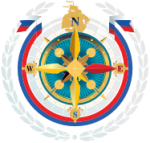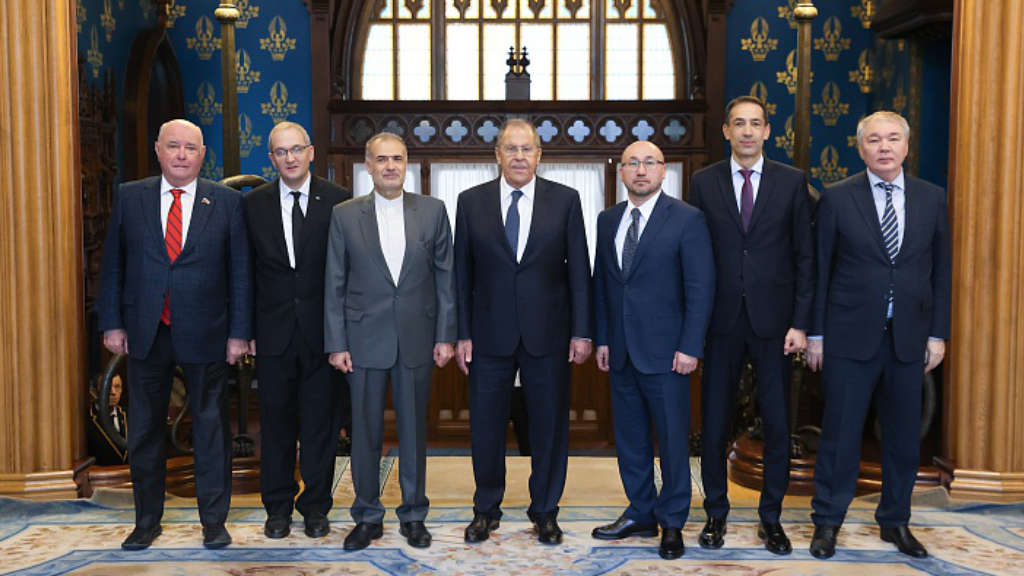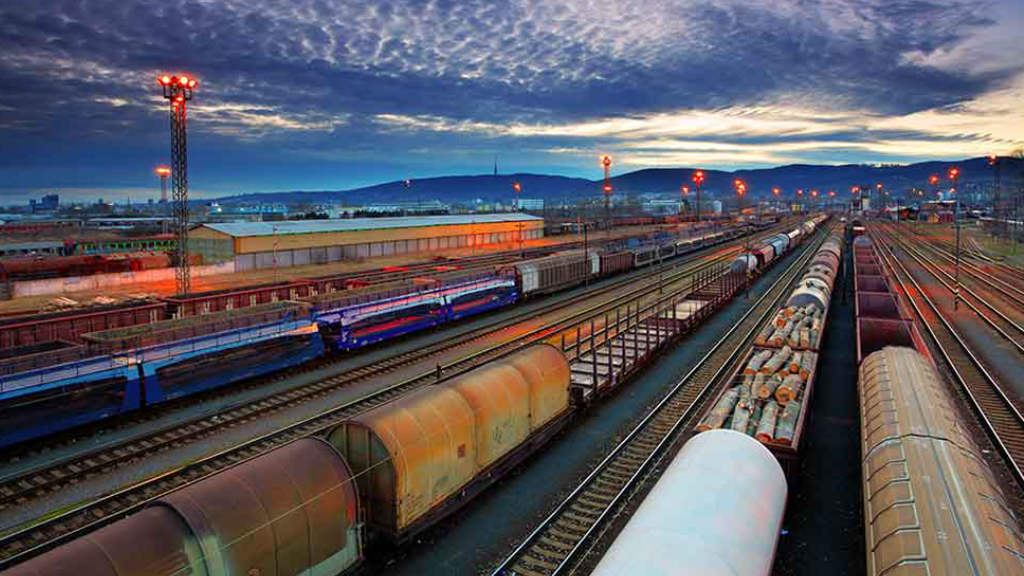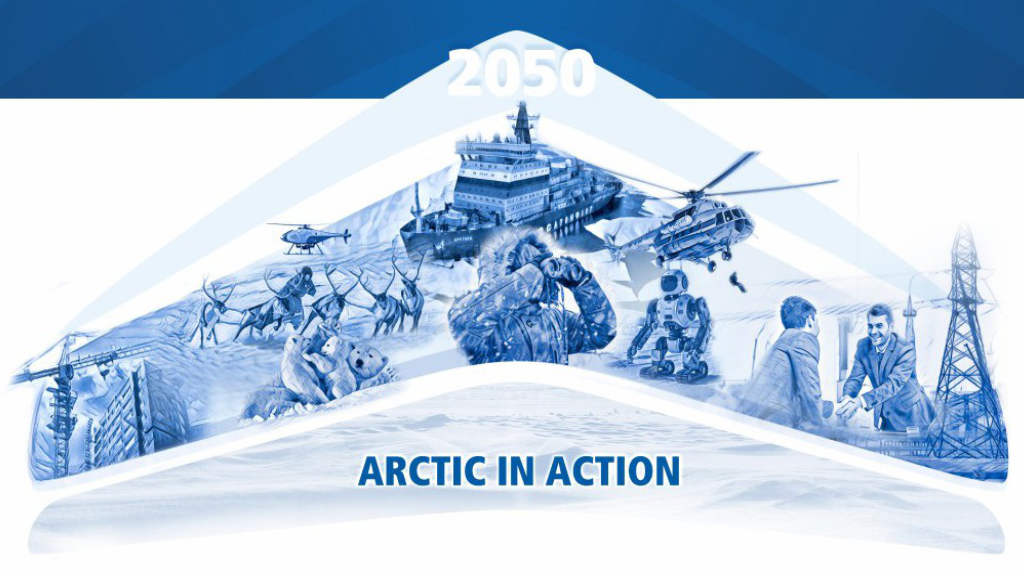The Russian Foreign Minister Sergey Lavrov held his annual meeting on Monday (October 13th) with the heads of the four diplomatic missions of the Caspian states. In attendance were Azerbaijani Ambassador Rahman Mustafayev, Iranian Ambassador Kazem Jalali, Kazakh Ambassador Dauren Abayev, and Turkmen Ambassador Esen Aidogdyev.
The meeting was also attended by G.B. Karasin, Chairman of the Federation Council Committee on International Affairs, and L.I. Kalashnikov, Chairman of the State Duma Committee on CIS Affairs and Eurasian Integration.
Discussions included a wide range of issues related to multifaceted cooperation in the Caspian region and deepening interaction within the Caspian framework.
On the same day, a trilateral meeting on cooperation in the fields of transport, energy, and customs was held in Baku. The meeting was attended by Russian Deputy Prime Minister Alexei Overchuk, Azerbaijani Deputy Prime Minister Shahin Mustafayev, and Iranian Minister of Roads and Urban Development Farzaneh Sadeg. As a result, Russia, Azerbaijan, and Iran agreed to set up a working group to develop a plan of action for the development of the North-South international transport corridor by the beginning of next year.
That includes the need to take measures to increase the volume of traffic on the North-South international transport corridor to 15 million tons and ensure continuous growth in freight flows. An agreement was reached to create a working group to prepare an action plan for the implementation of these measures within three months. For comparison, 15 million tons is equivalent to 700,000 to 1 million TEU, or approximately 20% of the total annual TEU transshipment volume in Russia.
The participants confirmed “the importance of continuing efforts to develop the region’s transit potential,” as well as “the significance of accelerating projects aimed at developing and diversifying transport communications and, in this regard, the synchronized implementation of work to expand infrastructure along the INSTC in the relevant territories of the countries.”
An agreement was also reached to establish a special Working Group on Road Transport, consisting of the customs, border, and transport authorities of the three countries.
The signing of the regulation on the trilateral working group on customs cooperation to facilitate transit transport between Azerbaijan, Iran, and Russia. The need to simplify border crossing procedures and digitize transport, border, and customs operations throughout the corridor was emphasized.
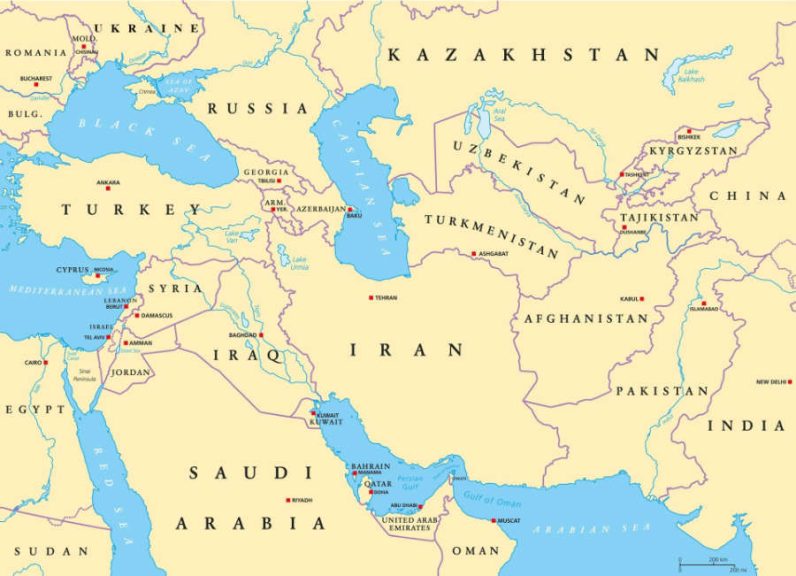
An agreement was also reached to continue discussions at the technical level on a project to connect the electrical grids of Azerbaijan, Iran, and Russia, further assisting railway development.
The INSTC links northern Europe with the Gulf and Indian Ocean states via Russia, the Caucasus, and Central Asia. The multimodal corridor was created under an agreement signed by Russia, Iran, and India in 2000, with the number of participants now at 12. The corridor has three main routes:
Western Route: Along the west coast of the Caspian Sea, also servicing markets in Georgia, Armenia and Turkiye with additional rail connectivity to the Black Sea and the European Union;
Eastern Route: Along the east coast of the Caspian Sea, reaching into Central Asia with onward connectivity to China via Kazakhstan;
Trans-Caspian Route: Extending north-south across the Caspian Sea, using Iran as an entry point for further shipments to the Middle East, Pakistan, India, and Southeast Asia.
Caspian Sea & INSTC Connectivity
We highlight the major regional ports and relevant tonnage capacity data as follows:
Russia
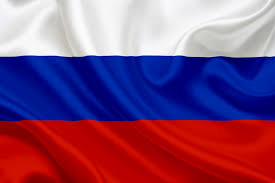
Russia’s main Caspian ports are Astrakhan, Makhachkala, and Olya, with Astrakhan being the largest hub on the Volga River and Makhachkala being the only ice-free port and a key centre for cargo and oil transshipment. Olya is also an important deep-water port. Astrakhan Port is undergoing a major expansion project to increase its overall capacity to 25 million tonnes per annum by 2026. It also has shipbuilding and repair facilities.
Azerbaijan
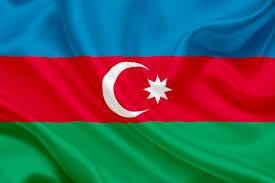
Azerbaijan’s main port is Baku, which is also connected to Russia by road and rail and westbound to Georgia and Turkiye. It is undergoing expansion to increase its capacity to 25 million tons of cargo and 500,000 TEU containers per year after the second phase of development is completed around 2030. Baku also has significant shipbuilding and repair facilities.
Kazakhstan
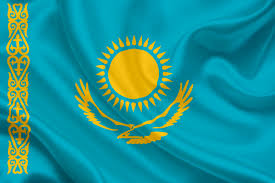
Kazakhstan’s main Caspian ports are Aktau and Kuryk. Aktau is a multi-functional port for oil, grain, and containerized cargo, while Kuryk is a newer ferry complex also handling grain, oil products, and other goods. Both are undergoing significant development to increase capacity and efficiency and will be capable of handling a combined 30 million tonnes per year by 2028. This feeds markets in Central Asia as well as onward cargo to China.
Turkmenistan
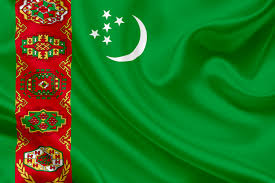
Turkmenistan’s Caspian seaport at Turkmenbashi is also being upgraded, and when combined with its old port, total throughput capacity will reach 25 million tonnes in 2027. This then connects with Turkmenistan Railways with transit through to Iran, Central Asia, and Pakistan.
Iran
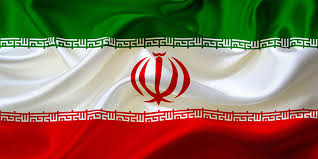
Iran’s main Caspian Ports are Bandar-e Anzali, Nowshahr, and Amirabad, serving as key distribution gateways. Significant government and private sector investments are being made to expand capacity in the Iranian Caspian Sea region, with the number of Iranian-registered vessels doubling from 47 to 94 between 2021 and 2025. The current annual capacity of these three ports is 32 million tonnes with this expected to increase by another 30% by 2030. From here, goods can be transported via Iranian railways to markets throughout Iran as well as to Iraq, Afghanistan, and Pakistan.
In addition, the southern railway route leads to Iranian ports on the Persian Gulf. These include Bandar Abbas, Imam Khomeini Port, Bushehr, Khorramshahr, and Bandar Lengeh. Their collective capacity is 300 million tonnes, with plans to increase this further. Shipments from Iran’s Persian Gulf ports service the Middle East, Pakistan, India, Southeast Asia, and East Africa.
The Iranian north-south railway link is not fully operational, with the Rasht-Astara line not expected to be fully completed by 2030. From then, the rail capacity of Iran’s transit between the Caspian Sea and Persian Gulf will record significant increases—one reason the other Caspian ports are undergoing substantial expansion.
Further Reading
Caspian Logistics Cluster Increases Trade With Southeast Asia, the Middle East, and India
